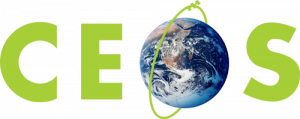Work Plan Outlines
 |
|
Introduction
The main task include:
- Development and validation of algorithms and methods for calibration of Sigma 0 using different reference or metrics
- Standardization/best practices of retrieval approaches of ocean surface winds (L2b data) by radar scatterometer data and guidelines to users
- Development of guidelines/standards of validation of ocean surface winds (L2b data) by radar scatterometer data
- Identifying and organizing collocation data, including both satellite data and in-situ measurements, for calibration and validation for ocean surface vector wind, which aims at the portal for calibration and validation of spaceborne scatterometer measurements for ocean surface vector winds.
- Demonstration of applications and establishment of portal.
Characterization of the instruments
Existing space-borne scatterometers operated at Ku-band started from the scatterometer on NASA's SeaSat-A satellite launched in 1978, followed by the NASA scatterometer (NSCAT) onboard Advanced Earth Observing Satellite "Midori" (ADEOS)-I, and SeaWinds scatterometer onboard Quikscat and ADEOS-II missions. The series satellite with Ku-band scatterometers developed by the India Space Research Organization (ISRO) and Chinese HY-2 series are with similar performances as SeaWinds, and the scatterometer onboard the Chinese-French Oceanic SATellite (CFOSAT) uses a different rotating fan-beam system design. The C-band scatterometers started from ESA's ERS-1 and 2 satellites, followed by the Advanced Scatterometer (ASCAT) onboard the MetOP-A, B, and C series satellites of EUMETSAT. In near future, more satellites will be launched to improve the temporal coverage.
Activities and expected outcomes
The common requirements for realizing the objectives proposed are data processing, reprocessing and calibration methods. The contributions and cooperation from agencies taken part in this project endorsed by the CEOS WGCV and OSVW-VC forms the basis for the implementation of this project. The main outcomes will be CEOS guidelines/international standards for calibration and validation, retrieval guidelines, best practices of calibration and validation data sharing and collaborations.
Leading Member and Institutes
Responsible Person: Xiaolong Dong
| No. | Name | Organization | Country |
|---|---|---|---|
| 1 | Chang, Paul | NOAA/NESDIS | USA |
| 2 | Dong, Xiaolong | National Space Science Center (NSSC), CAS | China |
| 3 | Kumar, Raj | Indian Space Research Organisition (ISRO) | India |
| 4 | Lin, Wenming | Nanjing University of Information Science and Technology | China |
| 5 | Linow, Stefanie | EUMETSAT | Germany |
| 6 | Portabella, Marcos | Institut de Ciències del Mar (ICM-CSIC) | Spain |
| 7 | Stoffellen, Ad | Koninklijk Nederlands Meteorologisch Instituut (KNMI) | The Netherlands |
| 8 | Zou, Juhong | National Satellite Oceanic Application Service (NSOAS) | China |
